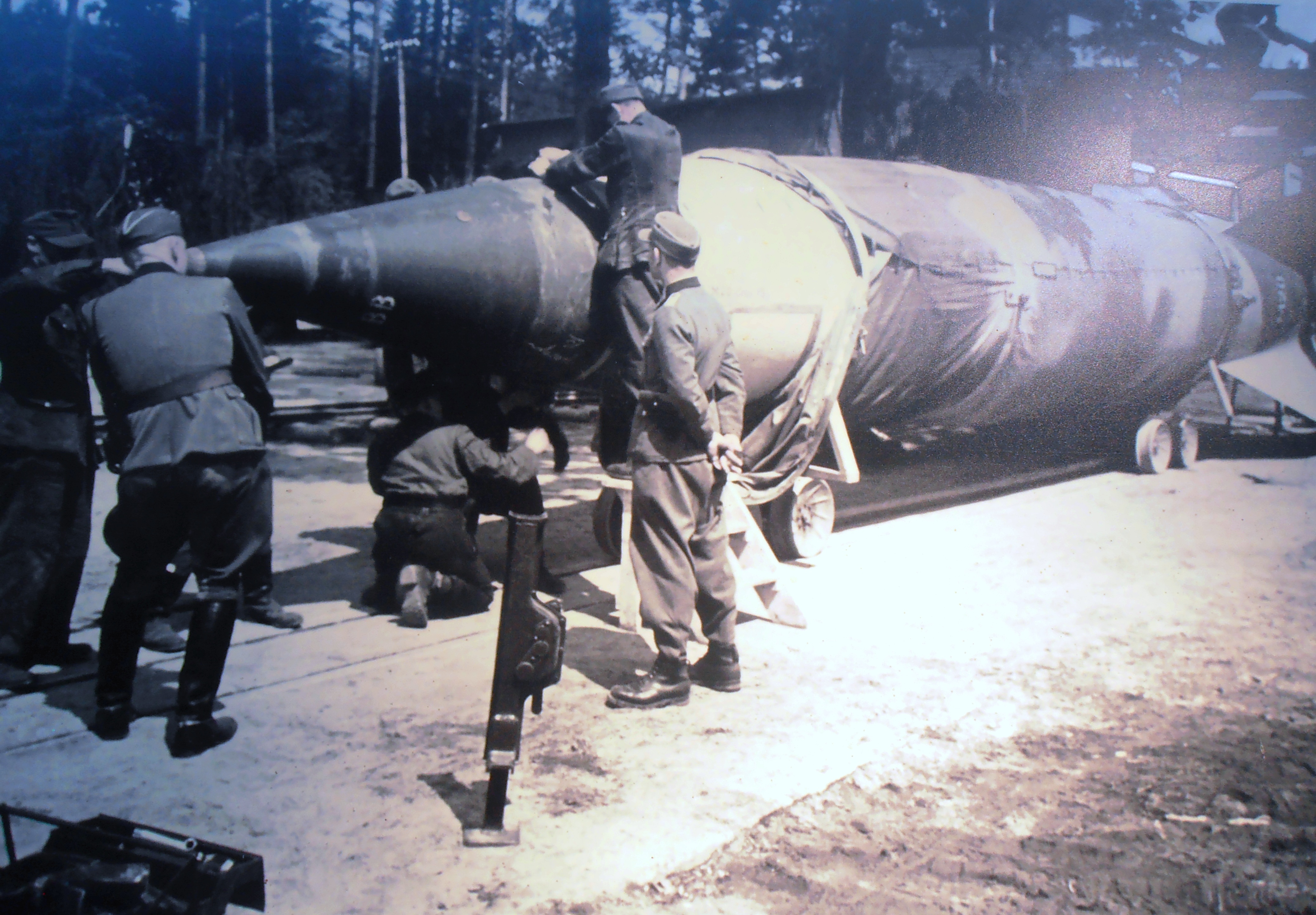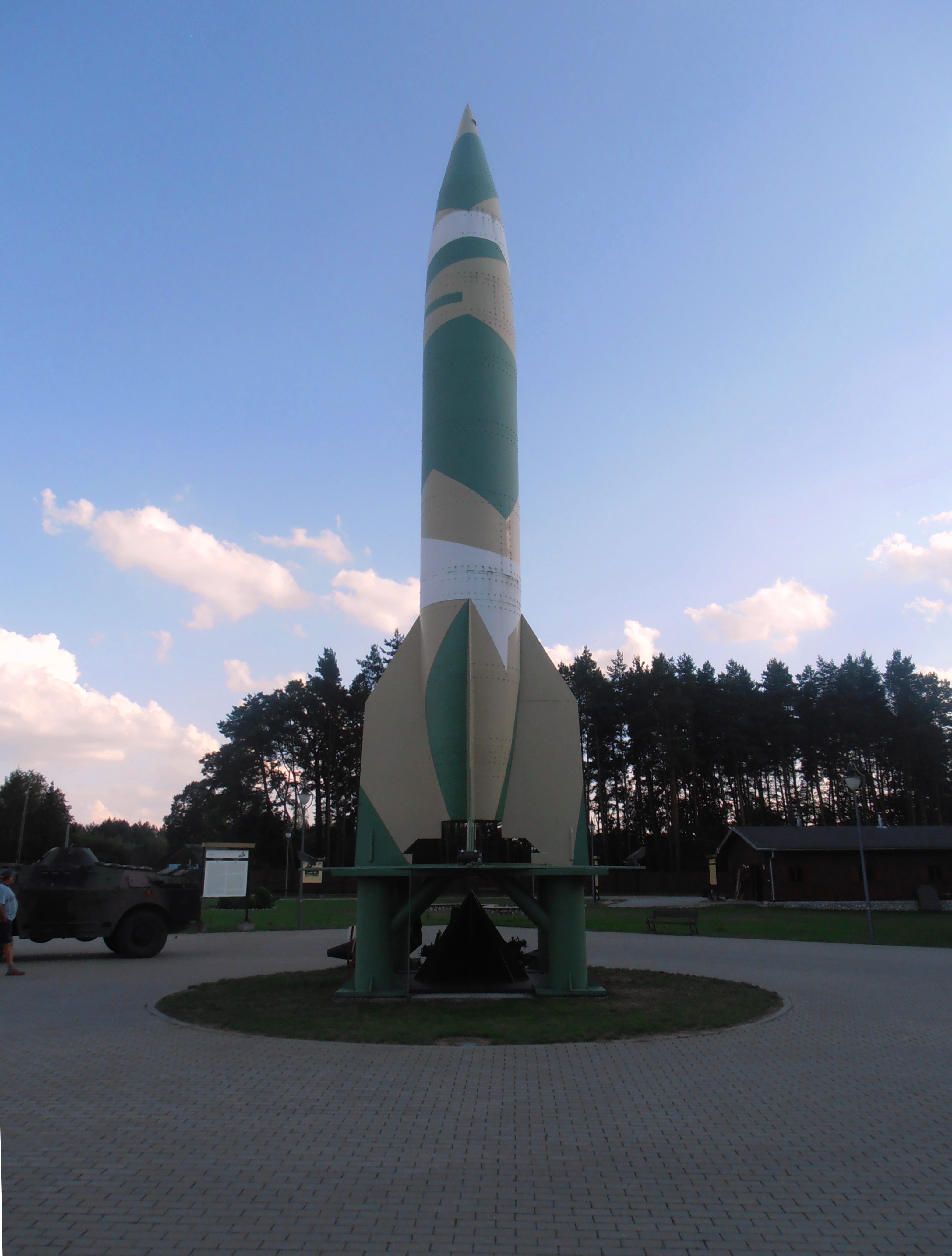Blizna, Subcarpathian Voivodeship on:
[Wikipedia]
[Google]
[Amazon]
Blizna is a
 From 5 November 1943 to early July 1944 there was an SS
From 5 November 1943 to early July 1944 there was an SS  The missile testing ground at Blizna was quickly located by the Polish resistance movement, the
The missile testing ground at Blizna was quickly located by the Polish resistance movement, the
village
A village is a human settlement or community, larger than a hamlet but smaller than a town with a population typically ranging from a few hundred to a few thousand. Although villages are often located in rural areas, the term urban v ...
in the administrative district of Gmina Ostrów
__NOTOC__
Gmina Ostrów is a rural gmina (administrative district) in Ropczyce-Sędziszów County, Subcarpathian Voivodeship, in south-eastern Poland. Its seat is the village of Ostrów, which lies approximately west of Ropczyce and west of the ...
, within Ropczyce-Sędziszów County
__NOTOC__
Ropczyce-Sędziszów County () is a unit of territorial administration and local government (powiat) in Subcarpathian Voivodeship, south-eastern Poland. It came into being on January 1, 1999, as a result of the Polish local government ref ...
, Subcarpathian Voivodeship
Subcarpathian Voivodeship is a Voivodeships of Poland, voivodeship, or province, in the southeastern corner of Poland. Its administrative capital and largest city is Rzeszów. Along with the Marshal, it is governed by the Subcarpathian Regional As ...
, in south-eastern Poland. It lies approximately north of Ostrów, north of Ropczyce
Ropczyce () is a town in the Subcarpathian Voivodeship in south-eastern Poland, situated in the valley of the Wielopolka River (a tributary of the Wisłoka River). The town has a population of 15,098 (). and is the seat of Ropczyce-Sędziszów ...
, and north-west of the regional capital Rzeszów
Rzeszów ( , ) is the largest city in southeastern Poland. It is located on both sides of the Wisłok River in the heartland of the Sandomierz Basin. Rzeszów is the capital of the Subcarpathian Voivodeship and the county seat, seat of Rzeszów C ...
.
History
World War II
 From 5 November 1943 to early July 1944 there was an SS
From 5 November 1943 to early July 1944 there was an SS military base
A military base is a facility directly owned and operated by or for the military or one of its branches that shelters military equipment and personnel, and facilitates training and operations. A military base always provides accommodations for ...
near Blizna, from which 139 A4 (also known as V-2) rockets were launched for experimental purposes and for training. Zak, Anatoly: RussianSpaceWeb.Com: 2009 Jena1806.Com: 2009 After the air raid on Peenemünde
Peenemünde (, ) is a municipality on the Baltic Sea island of Usedom in the Vorpommern-Greifswald district in Mecklenburg-Vorpommern in north-eastern Germany. It is part of the ''Amt (country subdivision), Amt'' (collective municipality) of Used ...
on 17 August 1943 it was decided that the training and testing should be done in southeast Poland outside of the range of the Allied bombers. However test launches also continued at Peenemuende until 21 February 1945.
Because the rockets launched from Blizna - in contrast to the rockets launched from Peenemünde
Peenemünde (, ) is a municipality on the Baltic Sea island of Usedom in the Vorpommern-Greifswald district in Mecklenburg-Vorpommern in north-eastern Germany. It is part of the ''Amt (country subdivision), Amt'' (collective municipality) of Used ...
- flew over a populated area, there was also some destruction of buildings. Wernher von Braun
Wernher Magnus Maximilian Freiherr von Braun ( ; ; 23 March 191216 June 1977) was a German–American aerospace engineer and space architect. He was a member of the Nazi Party and '' Allgemeine SS'', the leading figure in the development of ...
, a central figure in Germany's pre-war rocket development program, and post-war director of NASA
The National Aeronautics and Space Administration (NASA ) is an independent agencies of the United States government, independent agency of the federal government of the United States, US federal government responsible for the United States ...
's Marshall Space Flight Center
Marshall Space Flight Center (officially the George C. Marshall Space Flight Center; MSFC), located in Redstone Arsenal, Alabama (Huntsville, Alabama, Huntsville postal address), is the Federal government of the United States, U.S. government's ...
, worked at the Blizna test site and personally visited the test missile impact areas to troubleshoot any problems discovered during trials. Gatland, Kenneth William: Project Satellite: 1958 p82
 The missile testing ground at Blizna was quickly located by the Polish resistance movement, the
The missile testing ground at Blizna was quickly located by the Polish resistance movement, the Armia Krajowa
The Home Army (, ; abbreviated AK) was the dominant resistance movement in German-occupied Poland during World War II. The Home Army was formed in February 1942 from the earlier Związek Walki Zbrojnej (Armed Resistance) established in the ...
thanks to reports from local farmers. Armia Krajowa field agents even managed to obtain pieces of the fired rockets, by arriving on the scene before German patrols. In early March 1944, British Intelligence Headquarters received a report of an Armia Krajowa
The Home Army (, ; abbreviated AK) was the dominant resistance movement in German-occupied Poland during World War II. The Home Army was formed in February 1942 from the earlier Związek Walki Zbrojnej (Armed Resistance) established in the ...
agent (code name: ''‘Makary’'') who had covertly surveyed the Blizna railway line
Rail transport (also known as train transport) is a means of transport using wheeled vehicles running in tracks, which usually consist of two parallel steel rails. Rail transport is one of the two primary means of land transport, next to road ...
and observed a freight car
Goods wagons or freight wagons (North America: freight cars), also known as goods carriages, goods trucks, freight carriages or freight trucks, are unpowered railway vehicles that are used for the transportation of cargo. A variety of wagon types ...
heavily guarded by SS troops containing ''‘an object which, though covered by a tarpaulin, bore every resemblance to a monstrous torpedo’''. Subsequently, a plan was formed to make an attempt to capture a whole unexploded V-2 rocket
The V2 (), with the technical name ''Aggregat (rocket family), Aggregat-4'' (A4), was the world's first long-range missile guidance, guided ballistic missile. The missile, powered by a liquid-propellant rocket engine, was developed during the S ...
and transport it to Britain. Around 20 May 1944, a relatively undamaged V-2 rocket fell on the swampy bank of the Bug River
The Bug or Western Bug is a major river in Central Europe that flows through Belarus (border), Poland, and Ukraine, with a total length of . In late July 1944, the Polish resistance ( Home Army and V1 and V2) secretly transported parts of the rocket out of Poland in  In July 1944 the advance of Soviet troops forced the base at Blizna to be evacuated and launch activities were moved to the
In July 1944 the advance of Soviet troops forced the base at Blizna to be evacuated and launch activities were moved to the
Operation Most III
Operation Most III ( Polish for ''Bridge III'') or Operation Wildhorn III (in British documents) was a World War II operation in which Poland's ''Armia Krajowa'' provided the Allies with crucial intelligence on the German V-2 rocket.
Backgr ...
(Bridge III), for analysis by British intelligence
The Government of the United Kingdom maintains several intelligence agencies that deal with secret intelligence. These agencies are responsible for collecting, analysing and exploiting foreign and domestic intelligence, providing military intell ...
.
 In July 1944 the advance of Soviet troops forced the base at Blizna to be evacuated and launch activities were moved to the
In July 1944 the advance of Soviet troops forced the base at Blizna to be evacuated and launch activities were moved to the Tuchola Forest
The Tuchola Forest, also known as Tuchola Pinewoods or Tuchola Conifer Woods, (the latter a literal translation of ; ; ) is a large forest complex near the town of Tuchola in northern Poland. It lies between the Brda and Wda rivers, within the ...
.
References
Bibliography
* ** * * Władysław Góra, Wojna i okupacja ziemiach na Polskich 1939–1945, Wydawnictwo Książka i Wiedza, Warsaw 1984,External links
* https://web.archive.org/web/20060614113829/http://astronautix.com/sites/heilager.htm {{Spaceport Villages in Ropczyce-Sędziszów County Spaceports in Europe V-2 missile launch sites